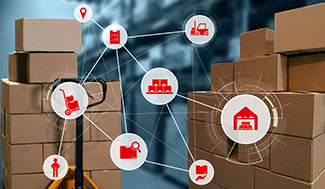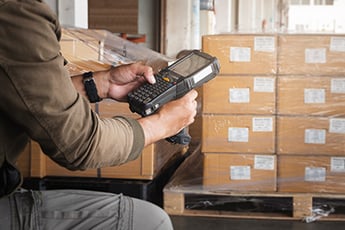Companies that utilize third party fulfillment (3PL) services sometimes reach a point where they consider transitioning from the 3PL services to internal warehousing and order fulfillment. Some of what drives these decisions is to control costs, whereas others have had a bad experience with 3PLs and now only trust themselves with their product. Using a 3PL isn’t for every company.
Read More >Developing a warehouse move plan is critical to successfully transitioning to a new facility. Here are key aspects to plan for months before your intended move in date.
Read More >Ecommerce supply chains must be dynamic, evolving to continually meet the various challenges and opportunities involving transportation costs, labor, management expectations, financial goals and customer demands. However, many fulfillment centers spend much of their time implementing reactive tactics without ever thinking through the strategy of what they are trying to achieve. The terms tactic and strategy are often confused and incorrectly used interchangeably.
Read More > Fulfillment cost per order is the sum of all the warehousing expenses involved with shipping orders, including:
Fulfillment cost per order is the sum of all the warehousing expenses involved with shipping orders, including:- Receiving, inventory putaway, and storing the product.
- Fulfilling orders through picking, packing, shipping.
- Reverse logistics or returns processing from customers.
Historically, many managers only look at the labor portion of the fulfillment cost per order. However, labor only represents 50-60% of the total costs. A fully loaded fulfillment cost per order is a better metric and includes facilities and occupancy costs and packing material costs.
This article discusses how to calculate the fulfillment cost per order, cost per line, and cost per box shipped.
Read More > Inventory is typically the largest balance sheet asset in most companies. Accurate inventory levels is required to deliver timely and accurate customer service as well as calculate profitability correctly.
Inventory is typically the largest balance sheet asset in most companies. Accurate inventory levels is required to deliver timely and accurate customer service as well as calculate profitability correctly.
Physical inventory counting once or twice per year to correct stock levels by SKU is tedious, time consuming, expensive and disruptive because it generally halts all production through the distribution center.
Causes of shrinkage include theft, poor inventory processes, inaccurate systems, lack of use of cycle counting and not having full bar coding of products.
Understanding Dock to Stock Times
 Every fulfillment center faces the same daily pressure to meet service levels, and much of this starts with the receiving process. This makes dock to stock time one of the most important metrics. What is dock to stock time? Dock to stock time measures how long it takes to process a receipt until it put into a stock location.
Every fulfillment center faces the same daily pressure to meet service levels, and much of this starts with the receiving process. This makes dock to stock time one of the most important metrics. What is dock to stock time? Dock to stock time measures how long it takes to process a receipt until it put into a stock location.
In the supply chain, best in class companies have a dock to stock time that is typically around two hours. This is really only achievable by having, ASNs, dock scheduling, a strong vendor compliance manual, and strong warehouse management systems. For many companies, we tend to target a window of approximately four to eight hours for dock to stock times.
 It is not uncommon for warehouse operations and order fulfillment to lose efficiency in the picking process over time. Pick footprints tend to become larger and order picking becomes slower, driving up the cost per pick.
It is not uncommon for warehouse operations and order fulfillment to lose efficiency in the picking process over time. Pick footprints tend to become larger and order picking becomes slower, driving up the cost per pick.
As picking and packing grows, the available storage locations decrease, and new SKUs are slotted wherever space is available.
In addition, products tend to end up in less optimal locations. SKUs with higher velocity are located farther away from packing and shipping. Another problem is having a heavy item being stocked up high. By not having SKUs in optimal locations, travel times increase.
The biggest challenge you’ll face in relocating a warehouse is disruption to your business. If you are fully invested in inventory at an existing 3PL or your internal facility, how will you transfer inventory to start up the new facility without having to shut down for days or even weeks?
Read More > Few companies have documented the true cost of shipping errors, though everyone knows the impacts on customers is painful, often causing customers to never purchase again. As warehouse consultants, we often assist clients with ways to reduce shipping errors in their operations, and in developing the true cost of shipping errors.
Few companies have documented the true cost of shipping errors, though everyone knows the impacts on customers is painful, often causing customers to never purchase again. As warehouse consultants, we often assist clients with ways to reduce shipping errors in their operations, and in developing the true cost of shipping errors.
From our studies, the cost of a fulfillment or shipping error to your business is between $38.50 and $58.50, without customer service costs. These numbers can vary depending on your average parcel shipping costs. But the most severe error not factored into this number is an error that causes you to lose a customer and their lifetime value. Previously, we have discussed how to calculate cost of shipping errors, in this article we will focus on identifying the major causes of errors and practices which will reduce shipping errors.
Read More >For many companies, using 3PL solutions for warehouse and distribution functions can be the best way to support growth. There are many options for utilizing third party logistics. One misconception is that they are just warehousing and transportation partners.
way to support growth. There are many options for utilizing third party logistics. One misconception is that they are just warehousing and transportation partners.
However, many 3PLs offer a range of services from value added services to order fulfillment and returns. These value added services are often needed when supporting retail and marketplace partners.
Whether consumer, or wholesale distribution, choosing a 3PL for parts of your supply chain can provide cost savings. These cost savings come from reduced labor and management, elimination of capex and reduced shipping costs by using the 3PLs rates. In addition, 3PL solutions can provide improved customer service and customer satisfaction.
Working with a 3PL can have many benefits, which typically include the following aspects.
Read More >SUBSCRIBE VIA EMAIL
Articles by Topic
- 3rd Party Logistics (3PL) (25)
- Automation & MHE (7)
- DC/Warehouse Layout & Design (15)
- Distribution & Supply Chain Insights (3)
- Distribution & Supply Chain Strategies (42)
- Managing Labor, Costs & Metrics (25)
- Operational Assessments (68)
- Spare Parts & Parts Warehouses (3)
- Systems Selection & Implementation (11)
- Transportation & Shipping (8)
- Warehouse Management Systems (19)



